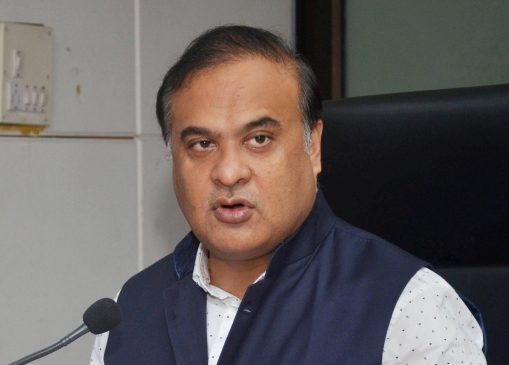The state of Assam has always been multilingual and multiethnic. It is not a recent phenomenon for outsiders to immigrate and migrate to Assam.
Read More:-7 Killed, 12 Districts Affected As Flood Situation Remains Grim In Assam
GUWAHATI: While the sub-nationalism in Assam has always been prevalent, the state saw its peak during the Assam agitation in the late 70s and early 80s. It subsided until a few years ago, the process of updating the National Register of Citizens (NRC) began and when the contentious Citizenship Amendment (CAA) bill was passed in the parliament, Assam was filled with high-voltage protests reminding the people of the days of Assam agitation.
The state of Assam has always been multilingual and multiethnic. It is not a recent phenomenon for outsiders to immigrate and migrate to Assam. It is exceedingly difficult to determine who the true indigenous population is. Nearly every tribe that calls this place home appears to have arrived here through time and from various locations.
Also Read– Assam schools start early amid heatwave conditions
From a historical perspective, Assam’s incorporation into British India changed the course of migration. A distinction between “indigenous” and “outsiders” was made, and a cry for the preservation of “Assamese identity” sprouted. The Assamese community’s identity was driven by a fear of being overtaken by demographic change rather than by simple self-discovery. The Assamese community invoked their identity of language and culture to feel separate when they were threatened on economic and cultural fronts. This sense of uniqueness gave origin to ‘Jatiyotabadi’, or sub-nationalism, as a political stance.
A nation within a nation, or sub-nationalism, was created as a result of the politics of recognition and representation, which supported the expansion of ethnic groups’ demands for their own administrative structure. It is critical to acknowledge the distinctiveness of these groups at this time. The state policy of recognising traditional institutions and representing ethnic groups in the decision-making bodies, however, may feed stronger sentiments of ethnicity among other groups if it is perceived as a favour granted or a right acquired through a political struggle. In varying degrees, its effects are discernible.
The development of sub-nationalism in Assam over time makes it possible to define the term and its meanings. Although there has always been migration from Bangladesh to Assam, several lakhs of Hindu and Muslim refugees first arrived in Assam in 1971 during Bangladesh’s war of liberation. The government of India pledged “all possible assistance to the government of Bangladesh in the unprecedented task of resettling the refugees and displaced persons in Bangladesh” in a joint statement that the Prime Ministers of India and Bangladesh released on February 8, 1972.
Not all refugees went home; in pursuit of work, Bangladeshi migrants kept crossing the border into Assam and other regions of India. The significant number of “outsiders” in Assam contributed to a sense of discomfort due to the state’s changing population, language, and culture, as well as the competition for resources. In the 1980s, a potent populist movement that demanded the removal of outsiders arose under the direction and leadership of the All Assam Students Union (AASU). The movement asserted a unique Assamese identity and, thus, a distinct citizenship. Based on the concept of “different yet equal,” difference was first defined in terms of the Assamese people’s linguistic and cultural identity, and later, after the United Liberation Front of Assam (ULFA) took over the fight, it was defined in terms of unequal development and discrimination.
Read More: Bank Holidays July 2023 List: Banks Are Closed For 15 Days, Check All Details Here
But, in 2023, whether it is ULFA-I, Assam movement or CAA protest, these factors have lost resemblance in Assam’s political dynamics. However, the sense of sub-nationalism is always welcomed by a good number of politicians who have been at the centre of power in the state. Himanta Biswa Sarma is no different. Moreover, to counter the AASU’s sub-nationalism concept of anti-CAA stand, the Assam Chief Minister was in search of a different narrative and he got Lachit Barphukan, the 17th-century Ahom general who fought hard with the Mughals to stop them from invading Assam.
In the Battle of Saraighat (1671), Borphukan had commanded the Ahom Army and beat the Mughals led by the Kachwaha Raja Ram Singh I. Prior to the British assuming control of Assam by the Treaty of Yandaboo in 1826, the Ahoms governed the region for 600 years (1228 to 1826). While the Lachit Borphukan tale is well-known in Assam, the state’s BJP-led administration has launched a number of measures to spread it across the nation.
The year 2022 was the 400th birth anniversary of Barphukan and Himnta Biswa Sarma left no stone unturned to use the opportunity to create an atmosphere of sub-nationalism which of course may help the BJP to gain electorally. The state government celebrated the quatercentenary birth anniversary of Lachit Barphukan on a large-scale. Four-day long function was held in the national capital to showcase the valour of 16th century Ahom General.
Read More: Delhi liquor policy scam: HC raps Manish Sisodia, asks ‘if liquor policy is so good, why did you…’
The Chief Minister asked for essay competitions on Lachit Barphukan and nearly 4.3 million handwritten essays were produced by students, government employees and others which created the Guinness World Records for the largest online photo album of hand written articles. The state government has even planned to install two giant statues of Lachit Barphukan — the 125 feet long statue is coming up in Jorhat in Assam and another 84-metre statue in Uttar Pradesh’s Ghaziabad is in the making. Also, to spread the valour of the Ahom general across the country, the state government has inked an agreement with a major OTT platform to showcase a short documentary produced on Barphukan’s life.
All these initiatives of the state government led by Himanta Biswa Sarma actually culminated into generating an umbrella of sub-nationalism revolving around the great Ahom warrior — Lachit Barphukan.



































